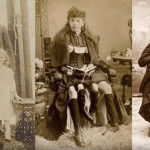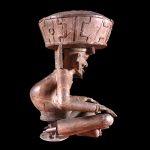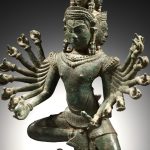Mummy Mask of a Woman
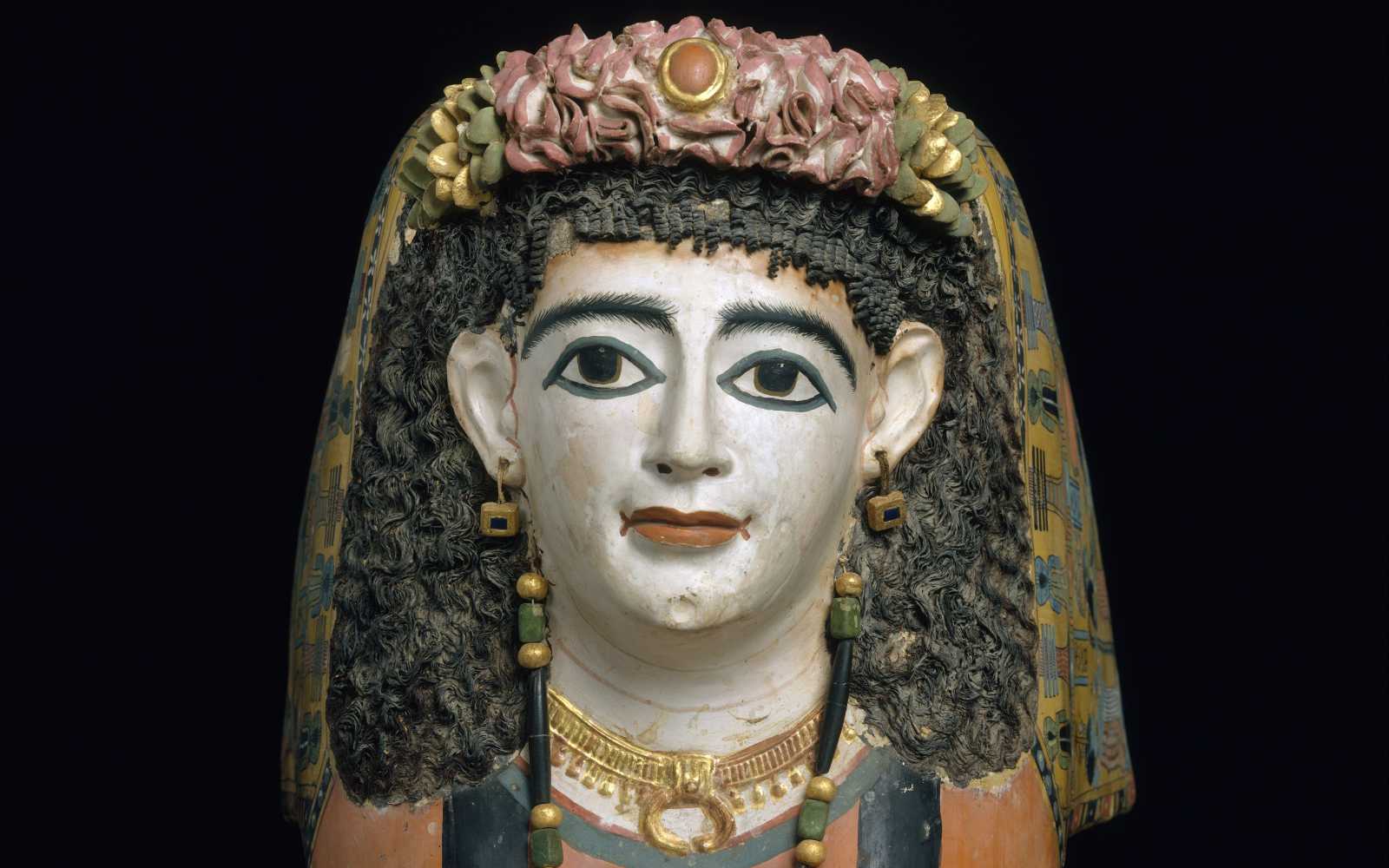
𝘔𝘶𝘮𝘮𝘺 mask of an Egyptian lady, dating to around 60–70 AD. Originating from Middle Egypt, this finely crafted funerary mask reflects the blending of traditional Egyptian and Roman styles of the period. Today, it is preserved at the Metropolitan Museum of Art in New York
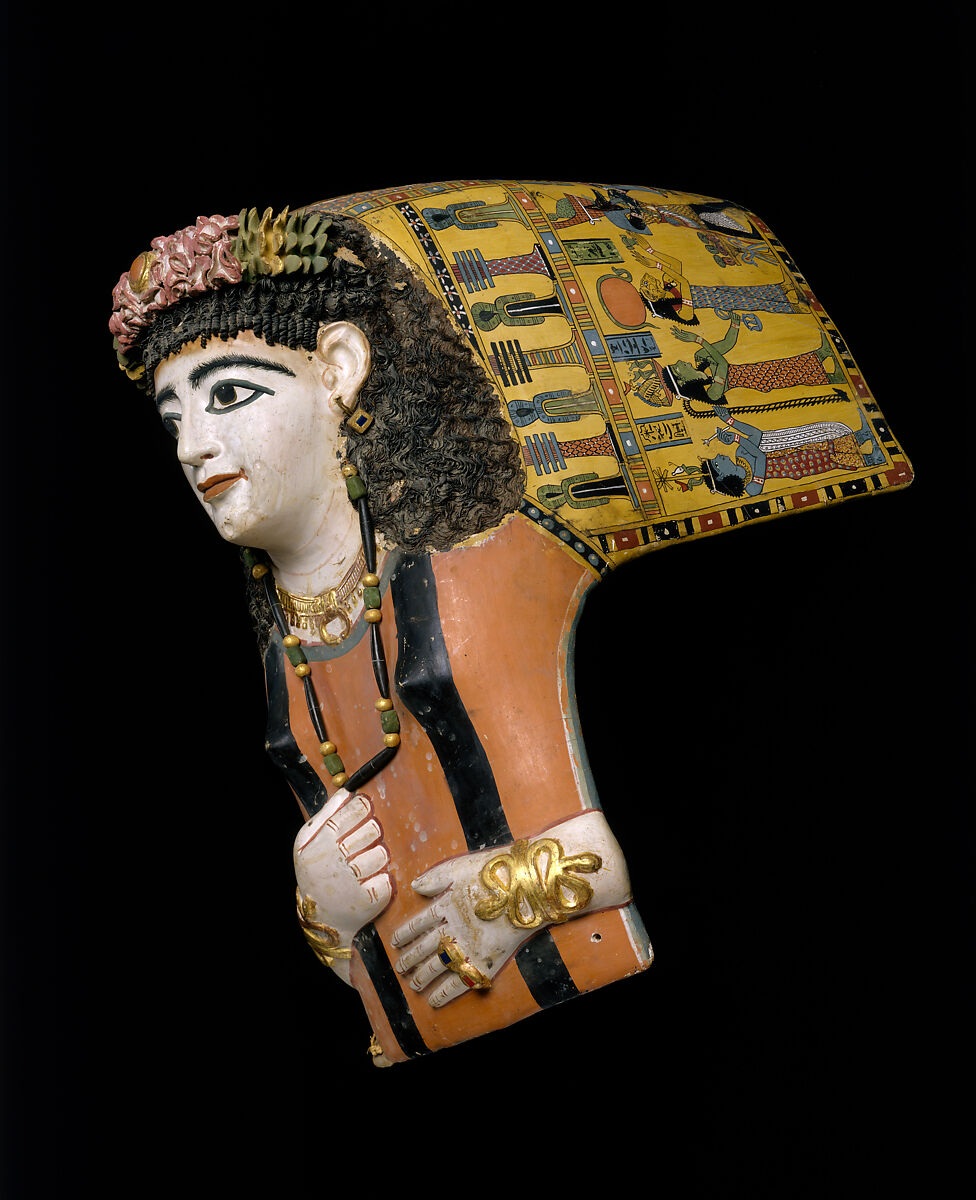
Plaster masks were particularly popular in Middle Egypt. While they evolved from traditional Egyptian practices, the faces could be highly individualized, and Roman fashions in hairstyle, clothing, and jewelry were often incorporated to varying degrees.
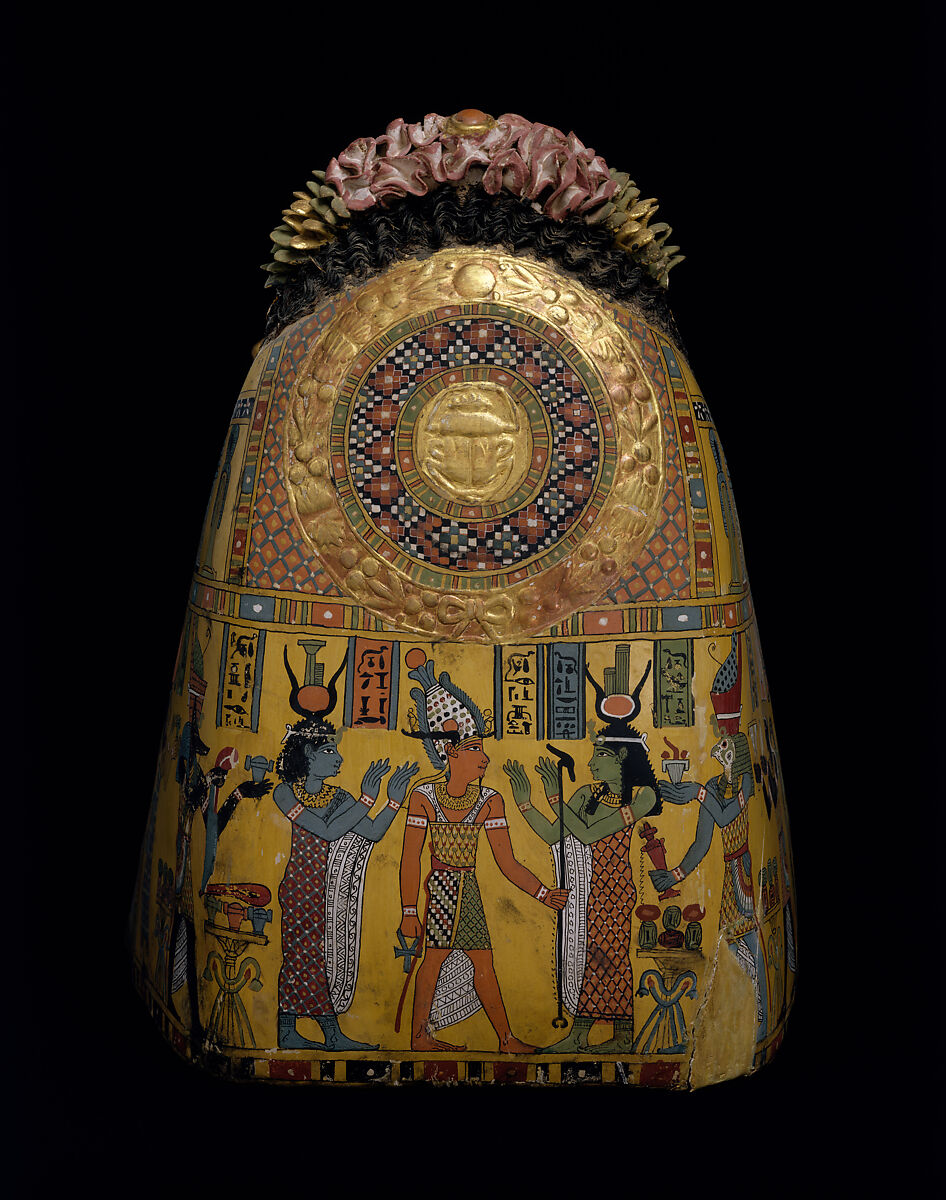
This mask closely resembles a group from Meir and almost certainly originated there. The woman is depicted as if lying flat on her bier. She wears a long Egyptian-style wig made of plant fibers, a deep-red tunic with black clavi (stripes), and jewelry that includes a lunula (crescent pendant) and snake bracelets. Two holes at the lower edge of her tunic allowed the mask to be attached to the mummy.
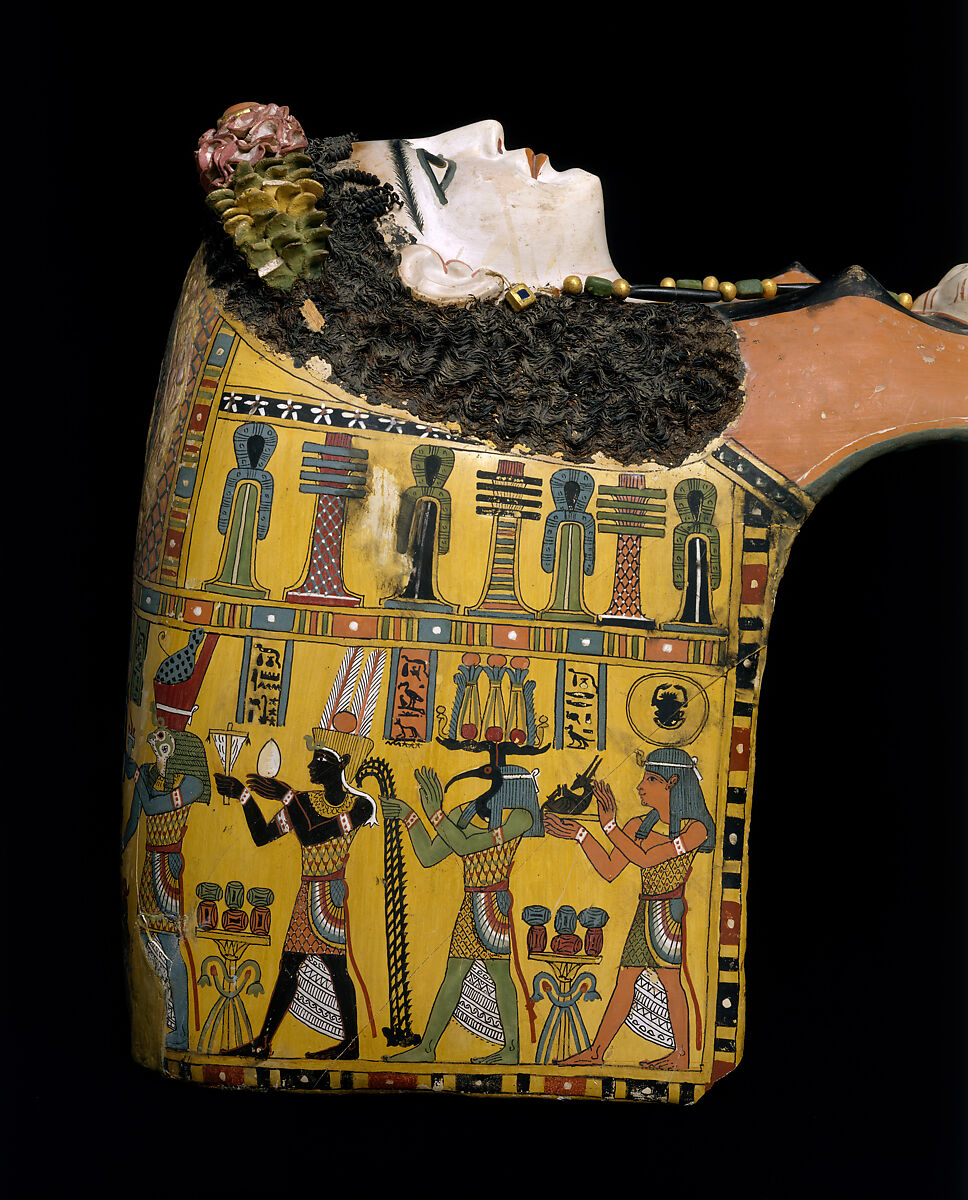
The back of her head is shown resting on a decorated support. Over the top of her head is a gilded wreath encircling a scarab beetle, symbolizing the sun rising at dawn—a metaphor for rebirth. The surrounding areas are filled with an intricate patterned background.
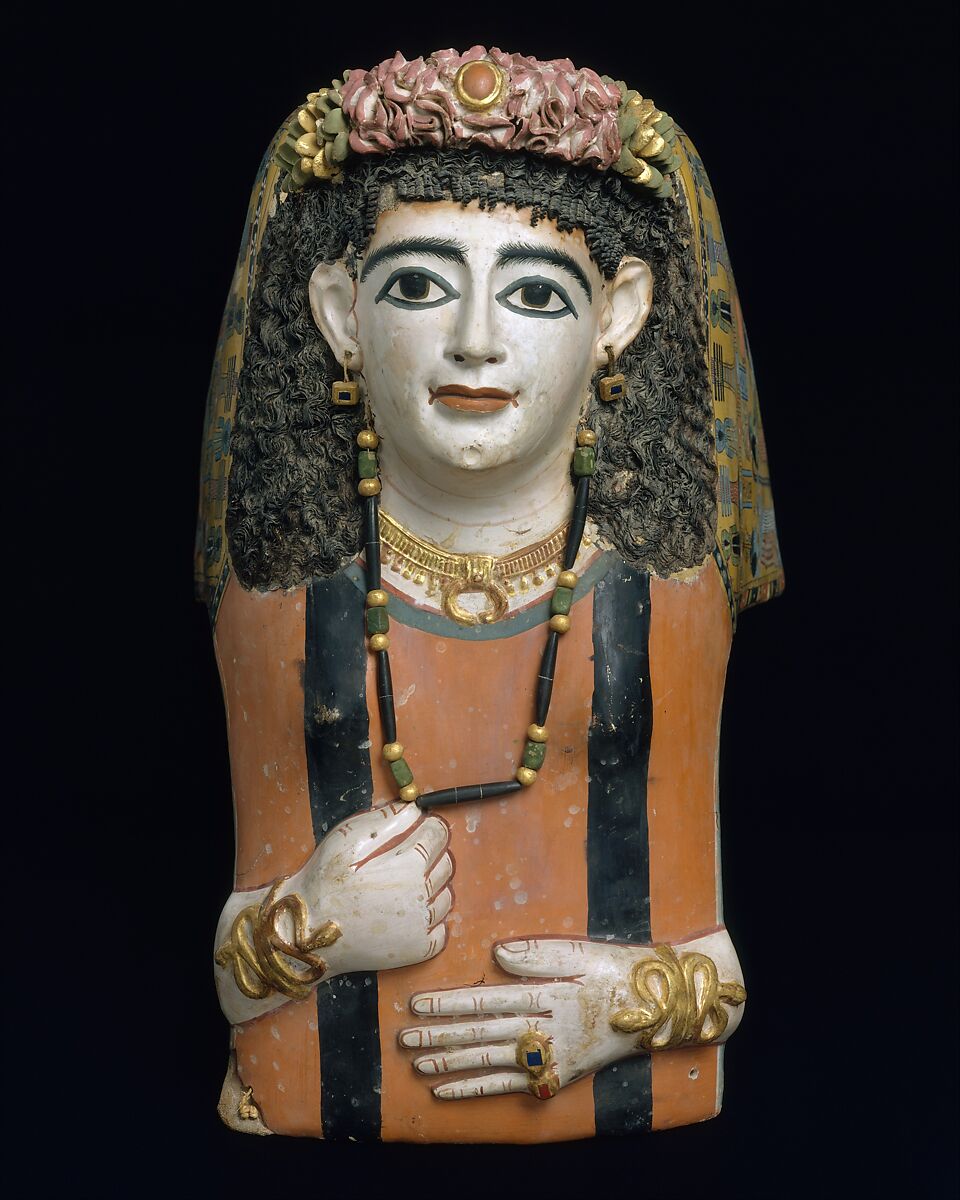
The sides feature a register of tyet knots and djed pillars, representing Isis and Osiris. A central register runs around the edge of the mask, focusing on Osiris, the god of regenerative power, flanked by Isis and Nephthys. To Osiris’s right are Horus, Amun, Thoth, and Re, while to his left are Anubis, Tefnut, Hathor, and Seshat. These deities act as witnesses to the deceased’s resurrection.
